This morning we took the metro to Yongsan from where we transferred onto Korail Line 1 to Suwon, (the brown line). Line 1 splits at Guro so care needs to be taken to ensure you are on the correct train. Express trains only operate after Guro so any train can be taken as far as there. In order to catch a bus to Hwaseong Fortress, we left Suwon station at Exit 4.
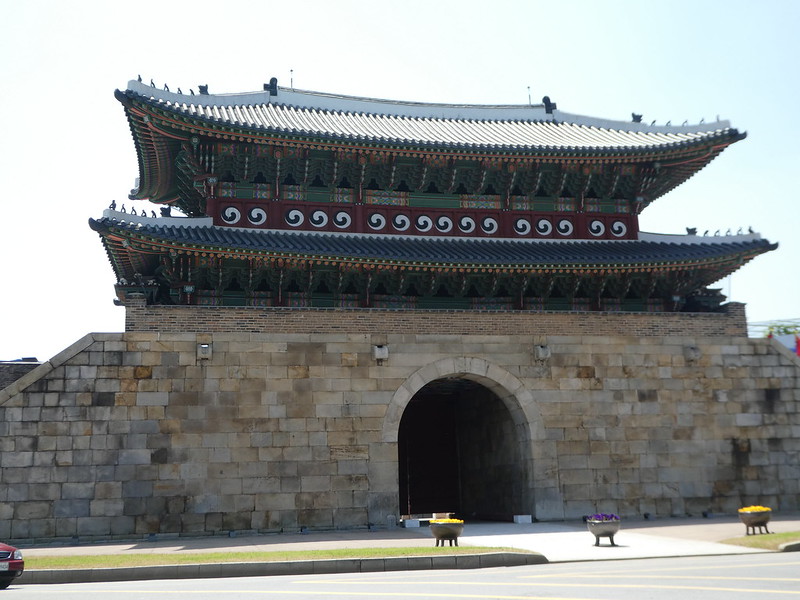
I had somehow expected Suwon to be fairly quiet but it’s an extremely busy and crowded city located 30 km (19 miles) to the south of Seoul. Turning left after leaving the station we called into the tourist information office to collect a map and enquire about buses to Hwaseong. Bus numbers 11, 13, 36 and 39 can all be taken from the bus stop outside the tourist information office and passengers need to alight at the fifth stop at the Paldalmun Gate. T Money cards can be used on buses and the fare is included in the original ticket price as long as the transfer takes place within 30 minutes. Do please remember to both tap in on entering the bus and out as you leave otherwise you will be charged more.
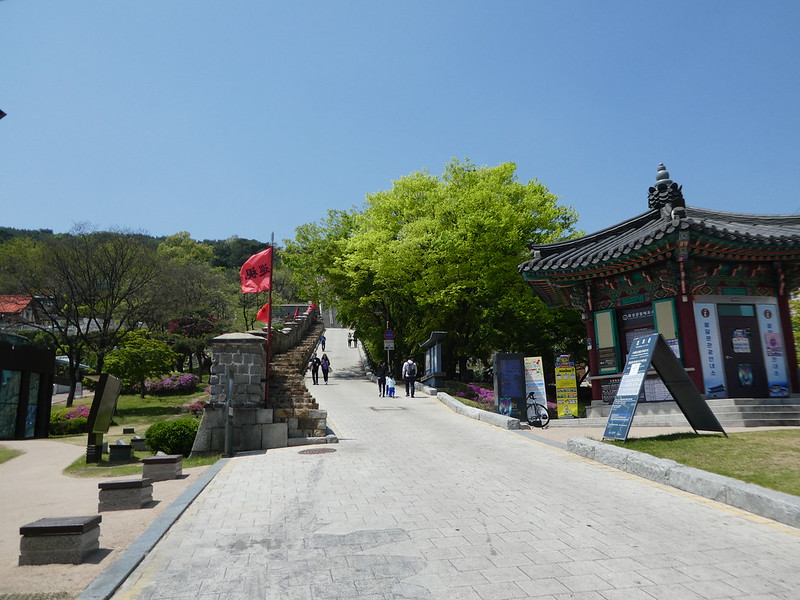
Before exploring the fortress we were in need of a drink so we stopped briefly to study our map and sip our coffees before making our way to the Paldalmun Gate. Integrated tickets (3,500 Won / £2.45) can be purchased for admission to Suwon Hwaseong Fortress, Hwaseong Haenggung Palace, Suwon Museum and Suwon Hwaseong Museum but as there was free entry on the weekend of our visit we got in free.

The Hwaseong Fortress is a very impressive structure dating from the latter part of the Joseon dynasty, being constructed between 1794-1796. In 1997 it became a UNESCO world heritage site. To the side of the Paldalmun Gate we followed a path along the edge of the fortress wall up Paldalsan Mountain. It was a very steep staircase but it levelled off once we arrived at the summit. The fortress wall stretches for a total of 5.52 km (3.57 miles) and has four gates, one facing in each direction.
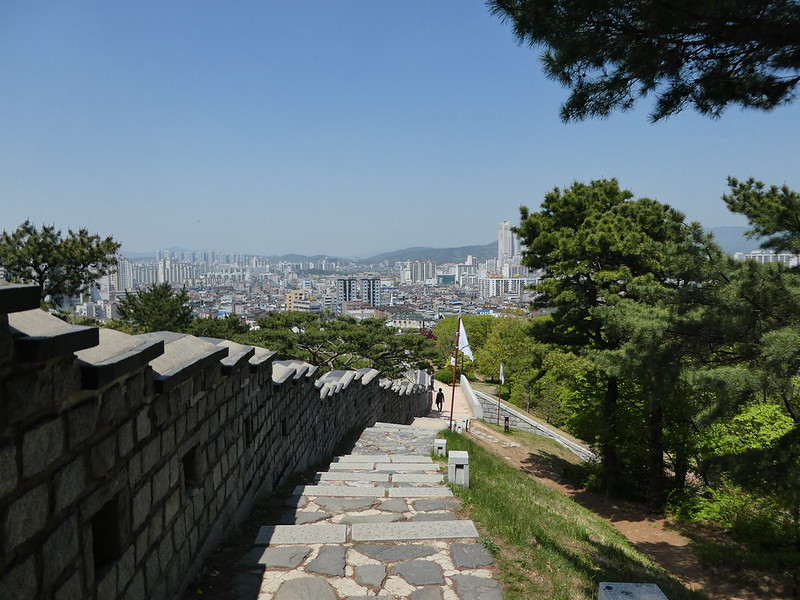
Having regained our breath, we strolled along the wall admiring the views and the ever present flowering azaleas which were at their best. Soon, we arrived at the ornate Hwahongmun Pavilion which provided us with panoramic views over the city of Suwon.
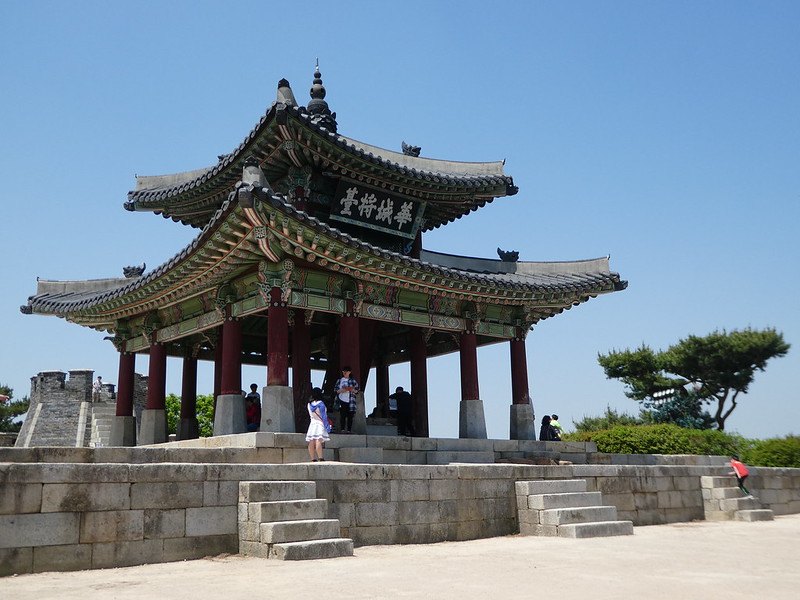
Continuing, we passed through the Hwaseomun Gate and progressed to a lower, flatter section of the wall leading to the Janganmun Gate where we decided to leave the wall. From there we walked alongside the stream to the centre of the fortress at Maehyanggyo bridge.
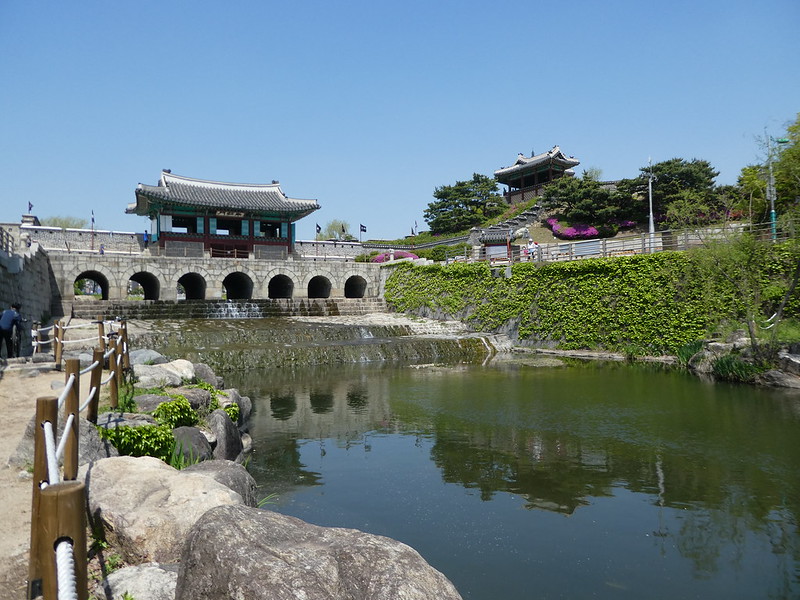
On arrival at the Haenggung Plaza outside the palace gates we discovered a Taekkyon festival taking place, appearing similar to Taekwondo as a casual observer like ourselves. By coincidence we had visited the World Taekwondo headquarters and museum the previous day so it was interesting to watch part of this martial arts competition.
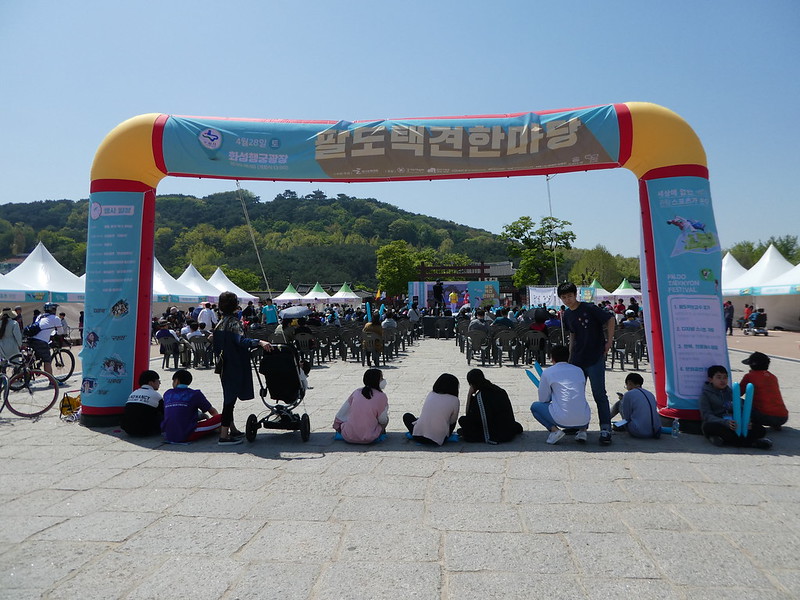
We had obviously arrived in Suwon on the best day as a traditional Korean music and dance festival was taking place in front of the Haenggung Palace. Finding a space on one of the benches, we sat in the sunshine for half an hour to watch part of the performance.

Inside the palace more activities were taking place including arts and crafts, traditional games and a theatrical performance. Although there were many people interested in these activities, the palace itself was actually not very busy and we enjoyed our self guided tour. Before leaving Suwon we had a quick look in the Art Museum and treated ourselves to ice cream cones before returning to Seoul. Our return journey to City Hall on Line 1 took approximately one hour and cost just over £1.
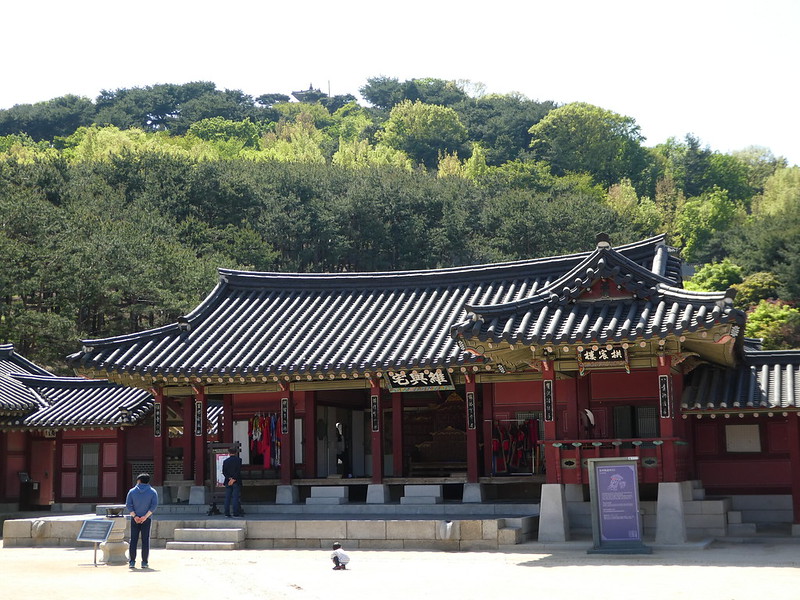
After a good rest in our room we enjoyed dinner in a small restaurant just around the corner from the hotel. My dish of buckwheat noodles in a warm chicken broth was delicious and came served with the usual kimchi side dishes.
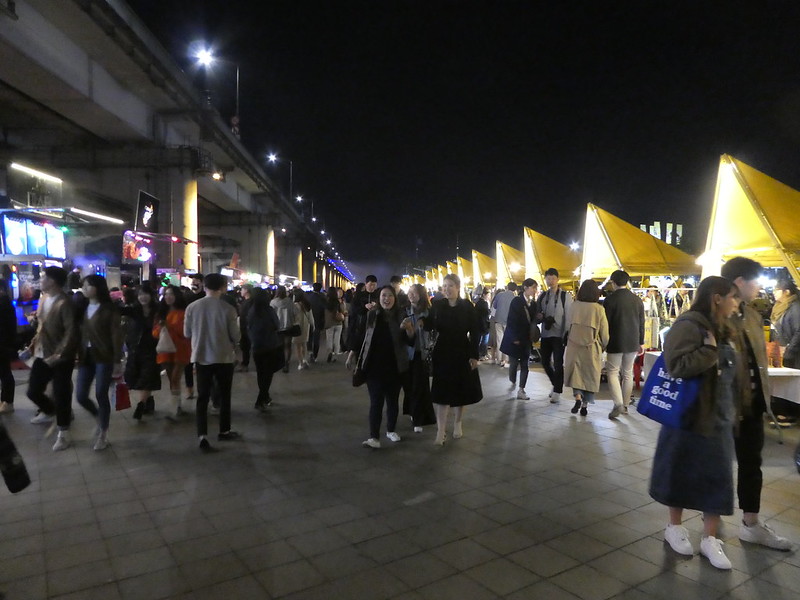
Having finished our meal, we took the metro to the Express Bus Terminal and then walked approximately 1 km to the Bamdokkaebi Park where a night market takes place each Friday and Saturday evening between 6.00 p.m. and 11.00 p.m. from March until October.
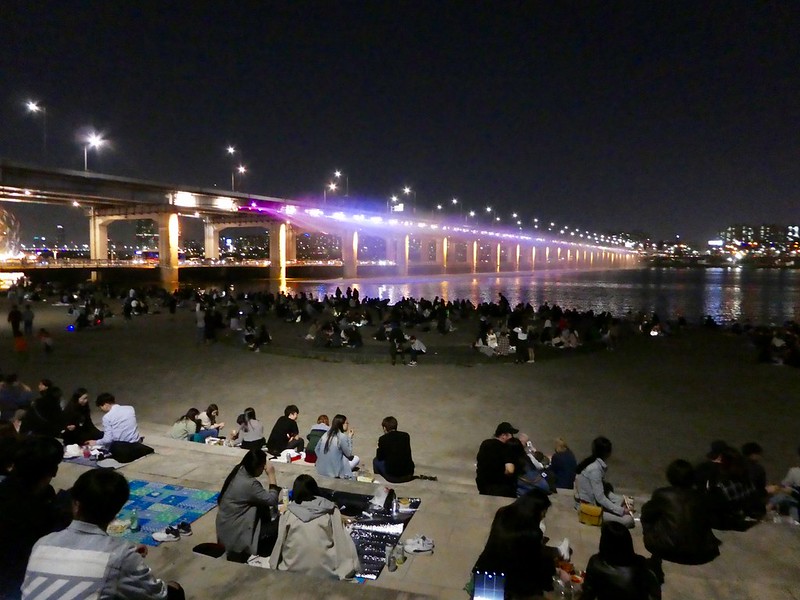
We were amazed to find that it was such a large event with hundreds of people enjoying moonlight picnics on the beach overlooking the river. It is one of the most popular weekend night markets amongst Seoulites. Dozens of food trucks offer both traditional Korean snacks and international dishes. I spotted a queue of people waiting to buy an English afternoon tea, complete with scone and jam, whilst others waited patiently for fish and chips or hot dogs. In addition to street food there were handicraft and gift stalls and a live stage.
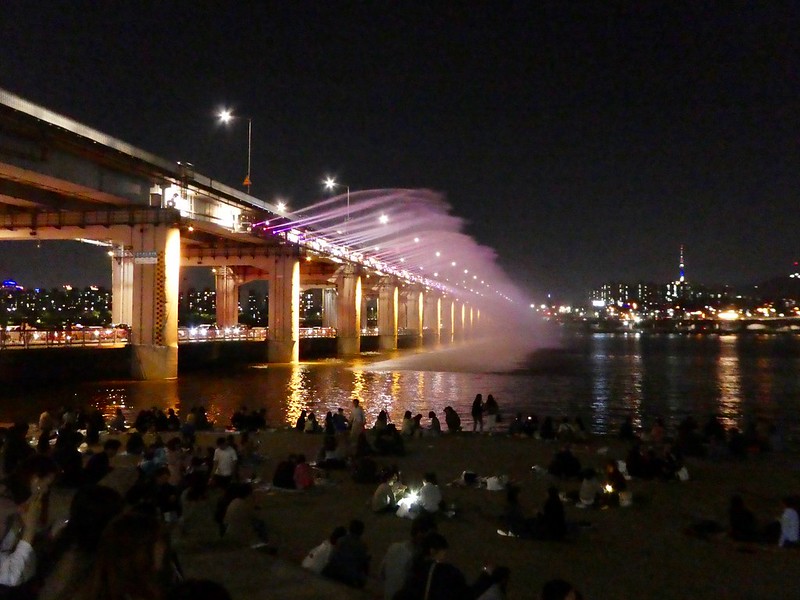
The market is centred around the Banpo Bridge Rainbow Fountain which runs along both sides of the Banpodaegyo bridge. Shows take place each evening between 7.30 p.m. and 9.30 p.m. lasting 20 minutes and are an impressive sight. 200 lights illuminate the fountain as it sends out rainbow coloured jets of water synchronised to music
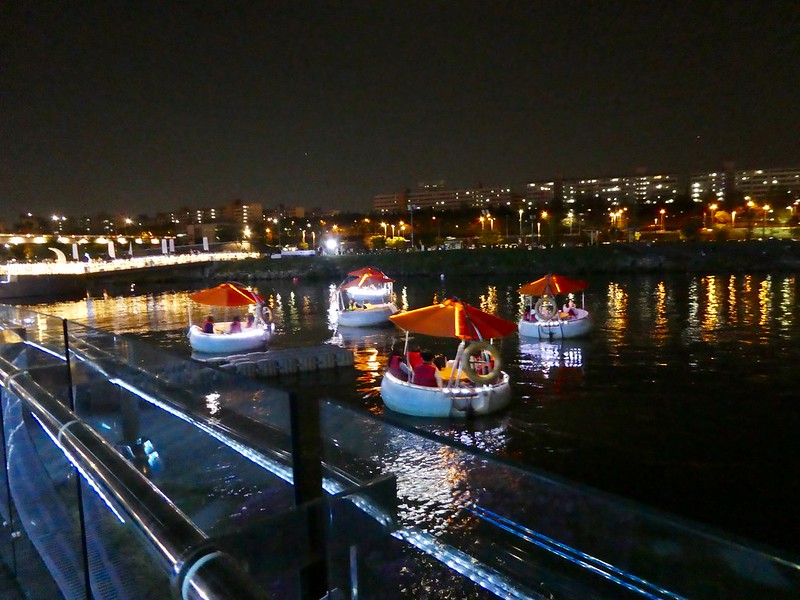
We wandered across a smaller bridge which connects to three man-made floating islands. These small islands were created with the theme of flowers on the Hangang River and were very pretty with their twinkling lights and floral displays. Located on the islands are a conference/ exhibition centre, restaurants and bars with outdoor gardens. These gardens were absolutely beautiful as from them there were splendid views of the rainbow bridge. Viewing the twinkling lights of the small boats bobbing around in the water was a perfect end to a lovely day in Suwon and Seoul.
If you have enjoyed reading this post you may also like:
Seoul Olympic Park and Naksan Mountain
Seoul: Gangnam, Temples, Samsung, Taekwondo & The National Assembly


Leave a comment